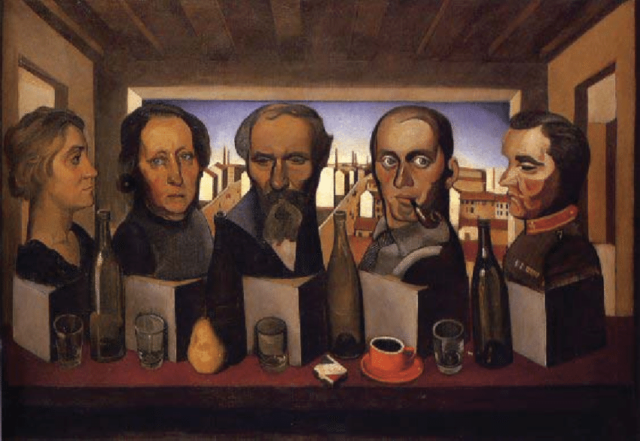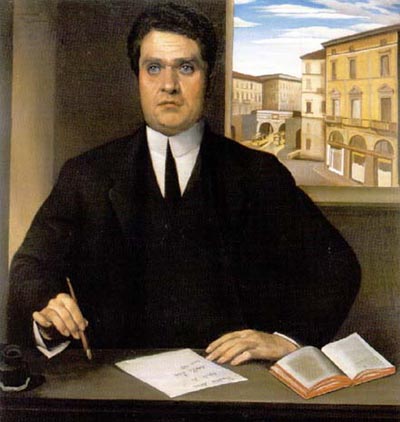ACHILLE FUNI 1890-1972
Funi bridges with intelligence the most important movements of the twentieth century: Futurism (Nouve Tendenze 1913-14) when he voluntarily enlisted in the First World War along with Marinetti, Sironi, Boccioni, Russolo and Sant’Elia in the famous Battaglione Ciclisti. This was followed by the Italian twentieth century classicism of the twenties to the thirties.

Achille Funi, Genealogia (Genealogy), 1918
Within the atmosphere of “return to order”, Funi followed the ideals of perfection and beauty and was obsessed by reproducing the body. He always worked in a highly traditional way: the study of geometry as the basis for any composition and drawing as the key and central working method, even in the brief futurist period immersed in the discovery of space he preferred the tension of volumetric contrasts to abstraction with a tendency towards the monumental already in the making.
A long period of mural painting followed and in 1933 he signed the Manifesto with Mario Sironi. In the same year he took part alongside Carra Sironi, De Chirico, Campigli, Cagli and Severini in the V Triennale d’Arte Decorativa, at Villa Reale in Monza. These were years in which the artistic atmosphere Milanese was highly charged, thanks to the public commissions and Triennale exhibitions which created an increasingly lively debate between architecture and decorative arts.

Achille Funi, Umberto Notari nello studio di piazza Cavour a Milano (Umberto Notari in his studio in piazza Cavour, Milan), 1921
Taking part in many of these same events was one of the major catalysts of the cultural scene of the time, Gio Ponti, who had inherited a renaissance conception of art and was both a great experimenter as well as an intellectual (an exhibition in Milan is showing a range of work – majolica, furniture, drawings and documents from the Art Deco period – of which Ponti was an elegant master) Funi encountered him again in the competition for the Palazzo del Littorio in Roma; these collaborations, born out of an association with Massimo Campigli, are an important testimony to the productive atmosphere of the time, despite the difficulties and awkwardness concerning the equivocal relationship between the regime and intellectuals.
Achille Funi. 1890-1972. L’artista e Milano
Date: December 15th, 2001 – February 24th, 2002
Place: Spazio Oberdan, Milano
Address: Viale Vittorio Veneto, 2, 20124 Milano
Tel: +39 (0)2 7740 6354
https://www.funi.artv.it
Text: Ilaria Ventriglia




